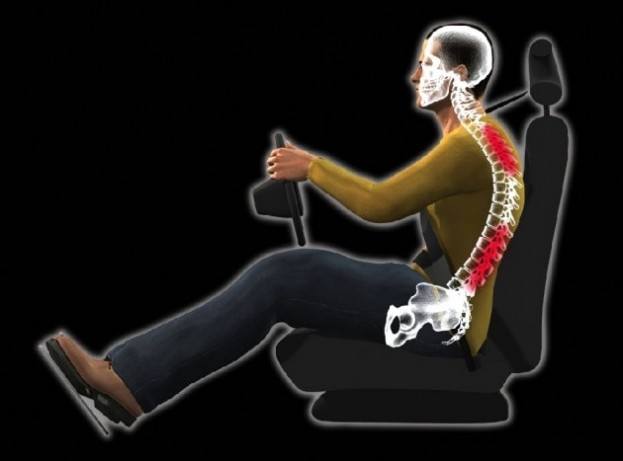On your very first driving lesson, your instructor should teach you the basic aspects of driving safely, and one of the first things they’ll discuss is your posture. This occurs early on in the process, which many of us forget over the years just how important driving posture can be. Sitting comfortably, with your back and neck well supported, is crucial to avoid injury in the event of an accident and avoid long-term physical problems. A surprising number of British drivers report discomfort and pain when driving – some after only a few minutes behind the wheel. While repetitive strain injury has long been recognized in the workplace, repetitive strain from simply driving around is less well recognized. Here are the basic tips to stop driving becoming a pain in the neck, arms, and upper back.
A Seat with a View
In terms of safety, while driving, it is essential that you can see the road clearly – that includes a full view from the windscreen and mirrors. Driving, especially if you drive for work, can involve long periods behind the wheel, so the seat position should be properly adjusted to suit you. The best way to achieve this is to get the seat into the worst possible position and work from there! Start with it as far back and as low down as the setting will allow; place yourself in the seat and then gradually bring it up and forward to a point where you can see clearly. Avoid positioning the seat so that you have to strain your neck upwards or downwards to do so.
Avoiding the Strain
Your legs should be positioned to minimize stress and strain on your upper leg muscles and avoid stretching your calf muscles. The upper leg should be as close to vertical as possible, not sharply angled upwards. Your feet should comfortably reach to operate the pedals without stretching and straining too far. Concerning the wheel, your arms should be neither too close nor too far away. Driving for prolonged periods with your arms crooked awkwardly creates tension in the muscles and strain on your elbows and shoulders. In turn, the latter can tense up neck muscles that produce strain injuries and can also significantly worsen injuries in the event of an accident. Your arms should be close to horizontal but partially relaxed.
Mirrors and Other Minor Matters
The mirrors should be directed to optimize your view of the road around you and should be adjusted after making adjustments to the seat. Try to position them so that you can see clearly without straining to do so. You’ll likely begin to slouch on long journeys, but correctly positioning the mirrors at the start of the journey can encourage you to sit up properly again. Periodically, on longer journeys, consider repositioning the mirrors if necessary.
Don’t approach the car like the Dukes of Hazard; sit in first and swing your legs in afterward; on the way out, it should be legs first, body second. Avoid loading or unloading heavy items immediately before and after driving; give your body a moment to relax, stretch, and un-tense (as with a warm-down after any strenuous exercise). Good posture while driving will help reduce longer-term driving-related injuries, and it can also reduce the risk of injury if you are involved in an accident. A few adjustments at the start of a journey is all that is needed!

Freelance writer, Richard Keys looks at the importance of good driving posture to avoid long term strain or injuries in the event of an accident.


